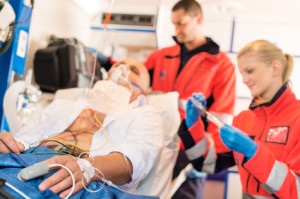
Yesterday I overheard a woman talking about her husband’s recent heart attack:
He came back from running feeling absolutely horrible, with tightness in his chest, but he thought it was just because of the cold air. She said to him, “it may be a heart attack. Let’s go to the emergency room.” He absolutely refused, saying, “it can’t be that; I’m a runner, I eat right, I’m absolutely healthy, no way!” With her smartphone in her hand, she immediately Googled “heart attack symptoms.” “I knew he’d never listen to me,” she said, “but I thought, ‘maybe with Google on my side, I’ll have more success.’” Within a few minutes he had relented and they arrived in the emergency room in time to prevent any major injury.
How times have changed! Imagine this scenario a decade or so ago. How long would it have taken the wife to come up with a list of those symptoms? I doubt they would have had “Physicians Desk Reference” on hand. What else could she have used to convince her husband this was serious enough to call 911?
I bring this up because even though I’m an advocate of conquering cyberoverload, I’m very grateful for the benefits that the electronic devices in our pockets bring us. And because they’re so valuable (especially in an emergency), it’s all the more important that we learn to manage them so that our constant connectivity doesn’t interfere with the rest of our lives: getting things done, maintaining good relationships, and managing stress.
We need to find ways to keep these “lifesavers” in our pockets while not allowing all that connectedness to overwhelm our lives.
